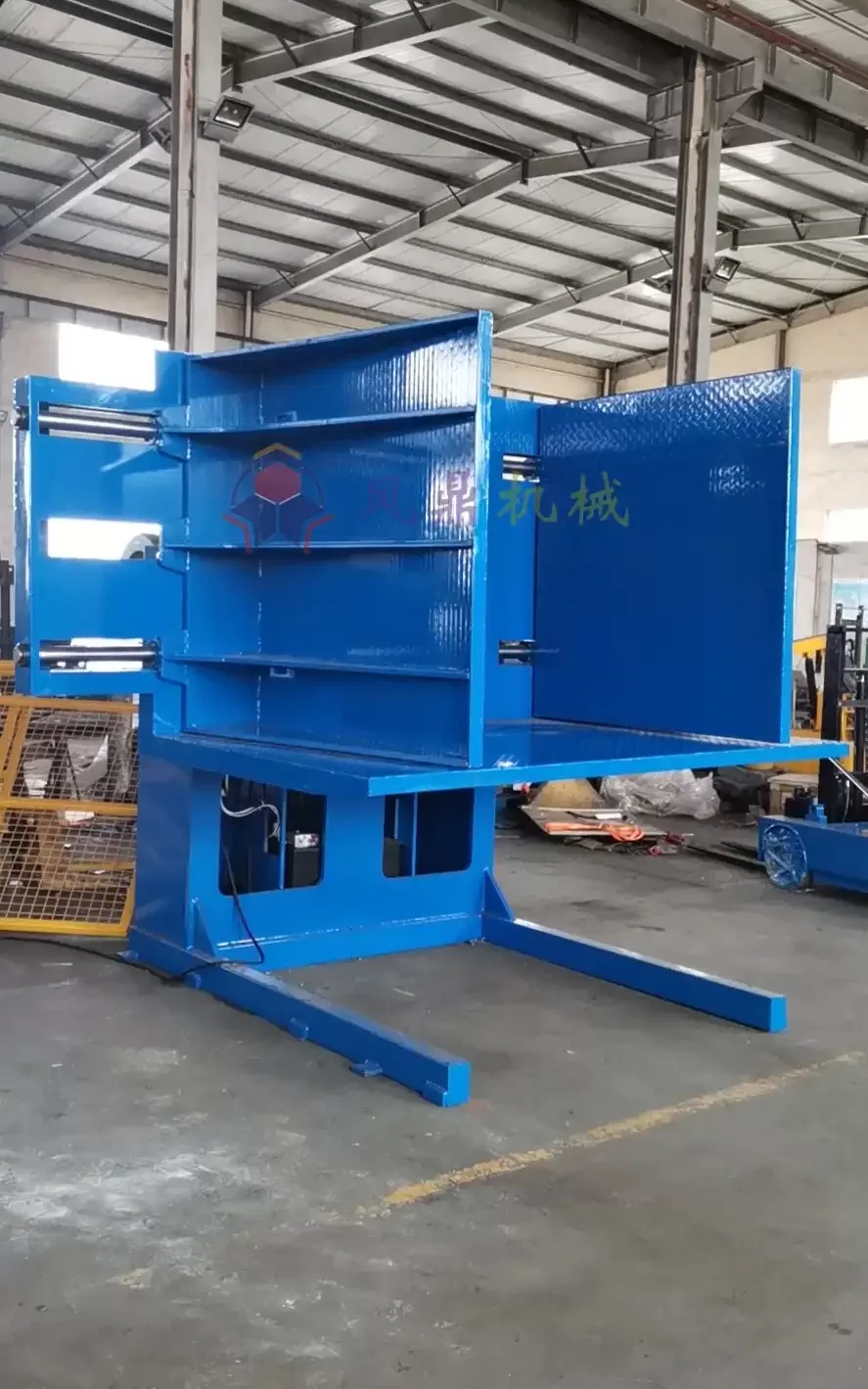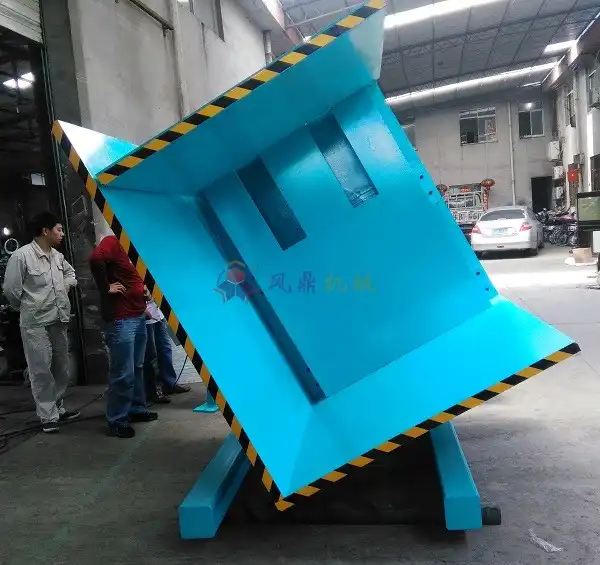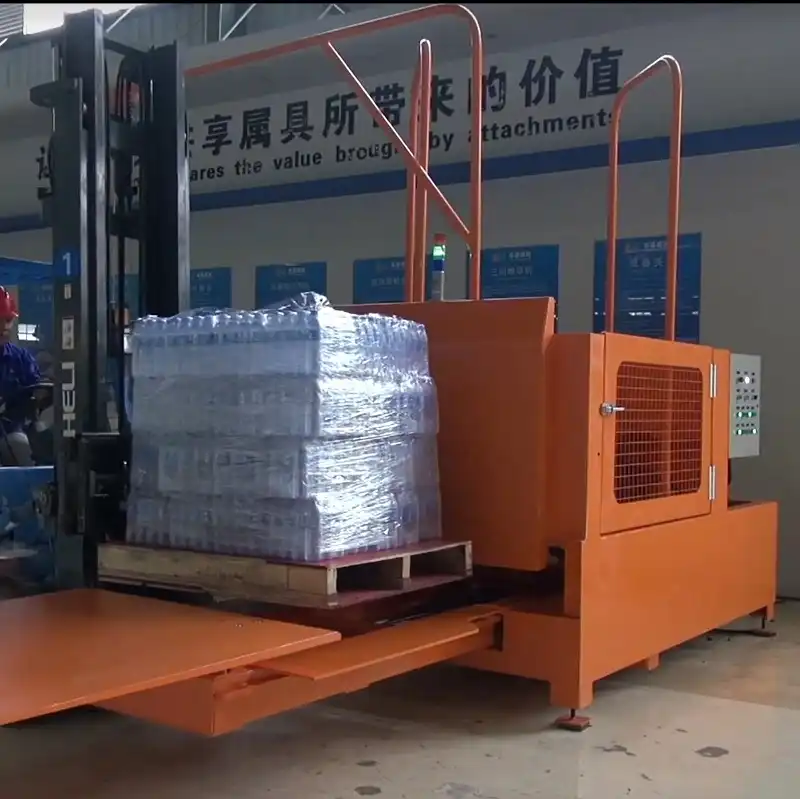What is a pallet inverter?
In today's fast-paced manufacturing world, efficient material handling can make or break productivity. When faced with damaged pallets or the need to transfer loads between different pallet types, manual solutions create major bottlenecks and safety risks.
A pallet inverter is a specialized material handling equipment that rotates palletized loads 180 degrees to transfer products between different pallets. This automated solution eliminates manual handling while ensuring safe and efficient pallet exchange operations.

Let me walk you through everything you need to know about pallet inverters, from basic operations to key benefits that can transform your material handling processes.
What is a Pallet Inverter?
Many warehouse managers struggle with damaged pallets and inefficient load transfers that slow down operations and put workers at risk of injury during manual handling.
A pallet inverter is an automated machine that securely grips and rotates palletized loads 180 degrees vertically. It has a clamp frame system that holds the load during rotation, allowing seamless transfer between different pallet types while maintaining load stability.

Key Components
- Clamp Frame: Heavy-duty plates that securely grip the load
- Rotation System: Hydraulic or electric mechanism for smooth 180° turning
- Safety Features: Emergency stops, load sensors, safety fencing
- Control Panel: Interface for operation settings and monitoring
Types of Pallet Inverters
| Type | Description | Best For |
|---|---|---|
| Standard | Basic 180° rotation | General warehousing |
| Push-Pull | Transfers loads without rotating | Slip sheet operations |
| Automated | Integrated with conveyor systems | High-volume facilities |
| Mobile | Portable units with wheels | Multi-location use |
How Does a Pallet Inverter Work?
Production delays and damaged goods are common problems when manually transferring loads between pallets. Workers waste time and risk injury trying to handle heavy items safely.
A pallet inverter works through a precise sequence of automated steps. First, it clamps the load securely between pressure plates. Then, hydraulic or electric systems rotate the entire assembly 180 degrees. Finally, it releases the load onto a new pallet.

Operating Process Breakdown
Load Positioning
- Place palletized load in inverter
- Align load properly within clamp frame
- Verify weight and dimensions are within specs
Clamping Sequence
- Pressure plates engage load
- Sensors confirm secure grip
- Safety checks performed
Rotation Phase
- Smooth 180° turn begins
- Load stays level throughout
- Controlled speed prevents shifting
Transfer Completion
- New pallet positioned
- Load lowered gently
- Clamps release automatically
Benefits of Using a Pallet Inverter
Manual pallet transfer operations expose workers to strain injuries and take excessive time. This creates unnecessary costs and risks that impact the bottom line.
Pallet inverters deliver multiple benefits: improved safety by eliminating manual handling, increased productivity through faster load transfers, reduced product damage, and lower labor costs. The ROI comes from both direct savings and prevented losses.

Safety Improvements
- Eliminates manual lifting
- Prevents repetitive strain injuries
- Reduces worker fatigue
- Maintains ergonomic operations
Efficiency Gains
| Area | Improvement |
|---|---|
| Speed | 75% faster than manual transfer |
| Labor | 50% reduction in handling time |
| Damage | 90% decrease in product damage |
| Costs | ROI within 12-18 months |
Environmental Impact
- Extended pallet life
- Reduced waste
- Lower energy usage
- Sustainable operations
Applications of Pallet Inverters
Traditional pallet handling methods create bottlenecks in various industries. Companies struggle with damaged products, inefficient processes, and workplace injuries.
Pallet inverters serve diverse industries including food and beverage, pharmaceuticals, chemicals, and manufacturing. They handle products from lightweight boxes to heavy machinery, making them versatile tools for any warehouse operation.

Industry-Specific Uses
Food & Beverage
- Temperature-sensitive products
- Hygienic pallet exchange
- High-volume operations
Manufacturing
- Heavy equipment handling
- Mixed load management
- Production line integration
Distribution Centers
- Cross-docking operations
- Multi-pallet standardization
- High-speed throughput
Selection Criteria Table
| Factor | Consideration |
|---|---|
| Load Weight | Maximum capacity needed |
| Dimensions | Product size range |
| Frequency | Usage volume |
| Environment | Indoor/outdoor use |
| Integration | Existing systems |
Conclusion
Pallet inverters transform material handling operations by providing safe, efficient load transfer solutions. They deliver measurable benefits in safety, productivity, and cost reduction while adapting to diverse industry needs. Consider your specific requirements when selecting the right model for your facility.